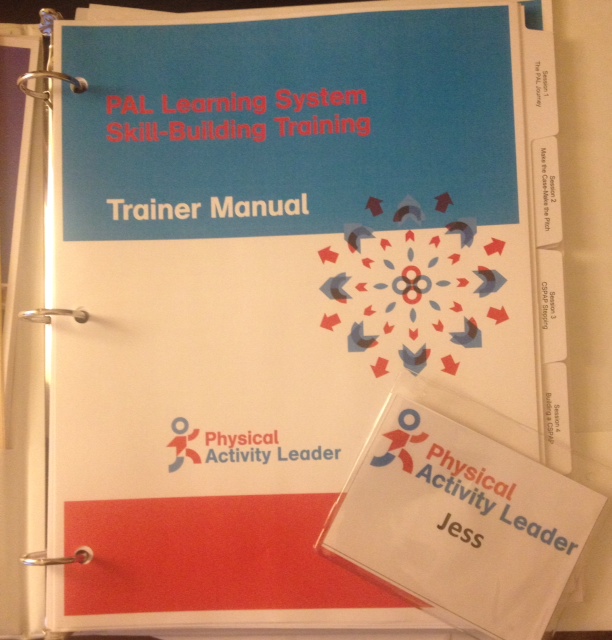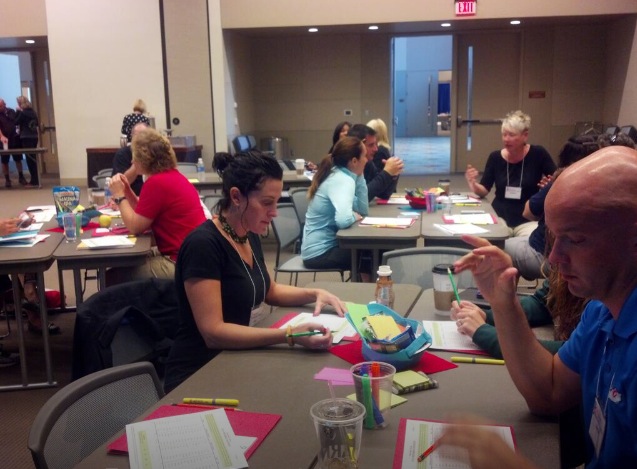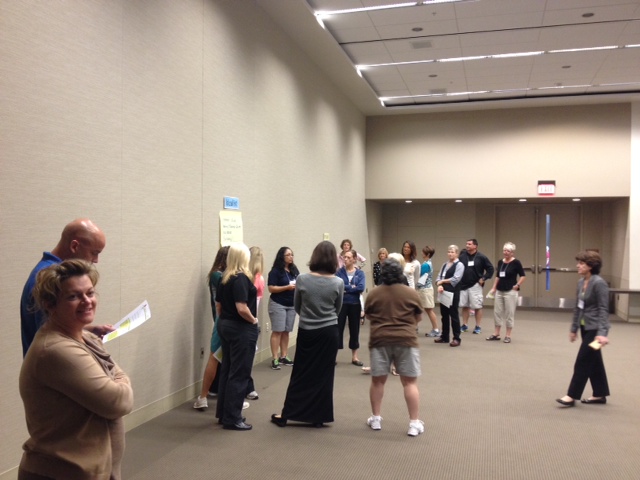
This week I’m in Phoenix alongside 20 other invite-only trainers in the field of health and physical education to participate in the first ever national training of trainers (TOT) lead by a partnership between CDC, Nike, Alliance for a Healthier Generation, AAHPERD and the President’s Council on Physical Fitness. The TOT is being facilitated by a longtime colleague of mine, Deb Christopher from Bolder Learning and the Physical Activity Leader (content) training is being facilitated by Aaron Beighle from University of Kentucky and Fran Zavacky from AAHPERD, other colleagues of mine that I’ve known for awhile.
The training coincides with Arizona’s AAHPERD, now called Arizona Health and PE so the regular training today will include another 20 educators from around Arizona. Tomorrow will be the TOT piece, where the original 20 selected trainers will take the next step and become trainers of trainers to help the initiative eventually over 5 years train over 20,000 educators in how to implement the Let’s Move Active Schools work.
The mantra of the initiative is “60 a Day!” and it includes a step by step process for creating sustainable systems change at a school implementing a CSPAP, Comprehensive School Physical Activity Program. A lot of people get recess, physical activity and physical education confused. They may be all different programs within in a school and the goal is that kids are physical active at least 60 minutes a day.
So, how does one implement a CSPAP in a school? Best practice says, implement a coordinated school health process…
Step 1: Establish a team. A SHAC, SWC, whatever you call it! Basically a council or team that works together so if that one champion leaves the following year, you have a committee
Step 2: Conduct an assessment of existing physical activity opportunities. Use the Alliance for a Healthier Generation’s Inventory! Or the School Health Index! Whatever it is, use something out there that has been developed and tested.
Step 3: Create a vision statement, goals and objectives for your CSPAP and use data from the needs assessment to drive this.
Step 4: Identify the outcomes or specific changes that will be direct results of the program implementation
Step 5: Identify and plan the activities for your CSPAP
Step 6: Implement!
Step 7: Evaluate your CSPAP. Make change based on results and improve your programs!
More to come after Days 2, 3, 4… but here are a few photos from yesterday’s training.


Deb, keeping us out of our seats and active!

Leave a Reply